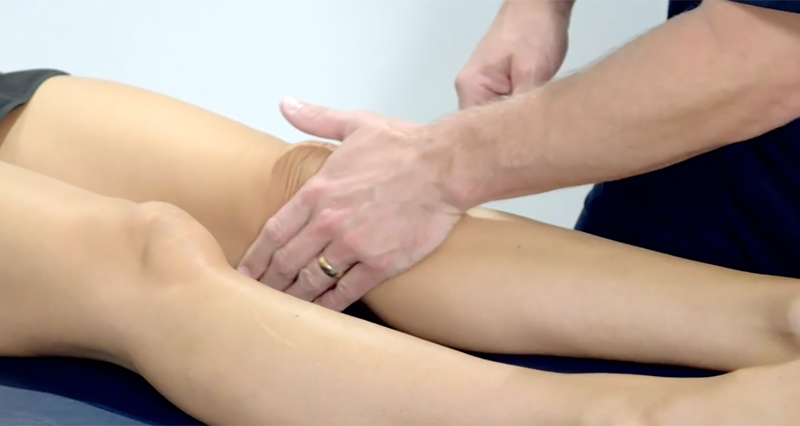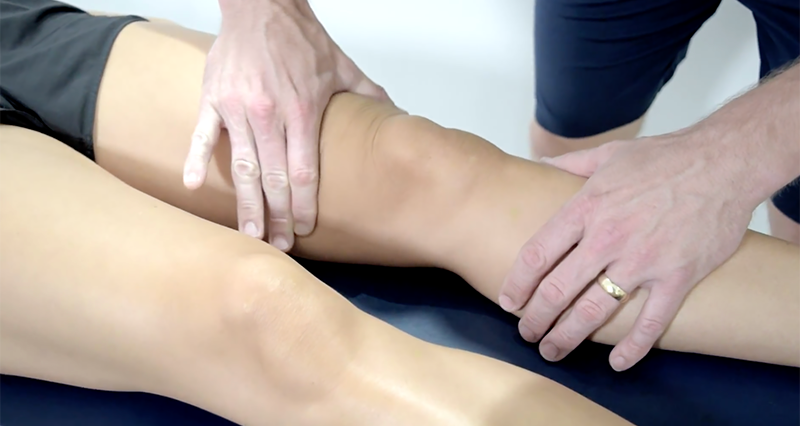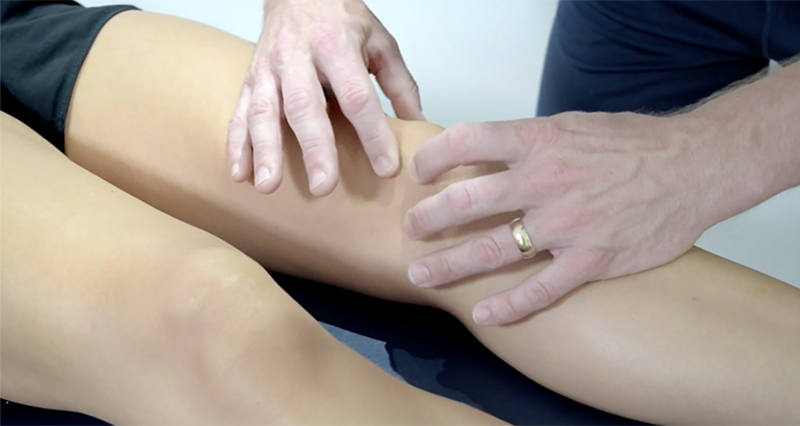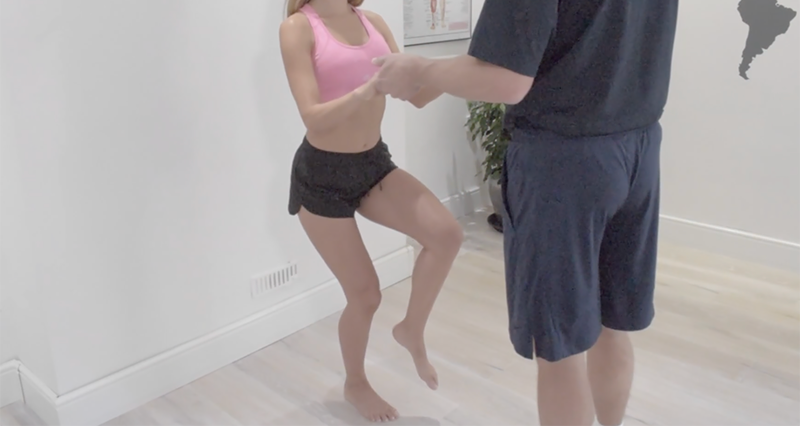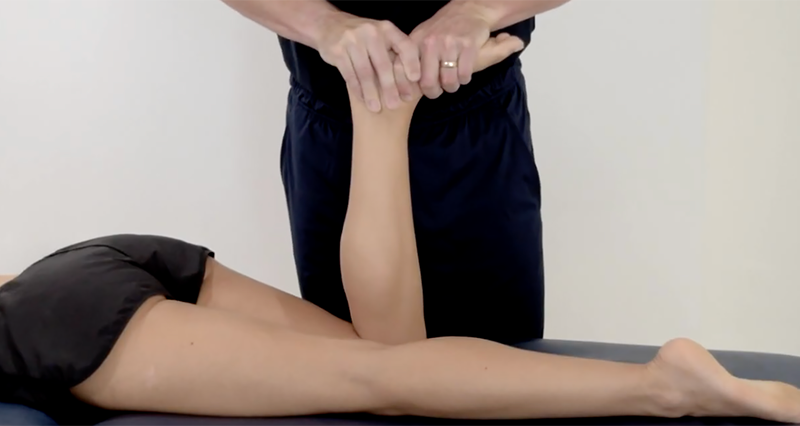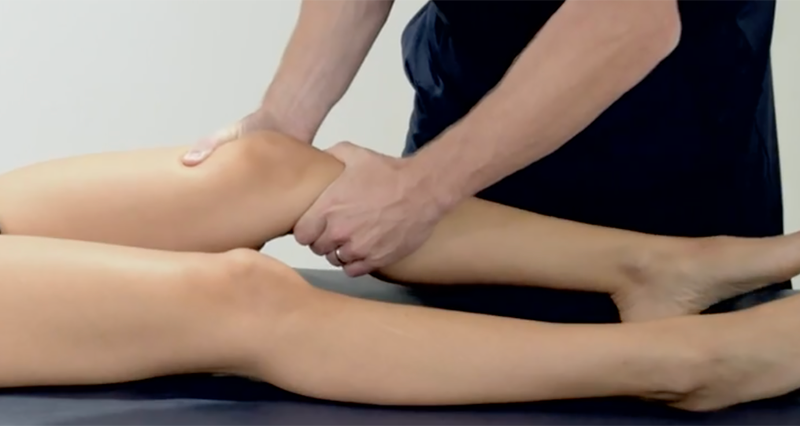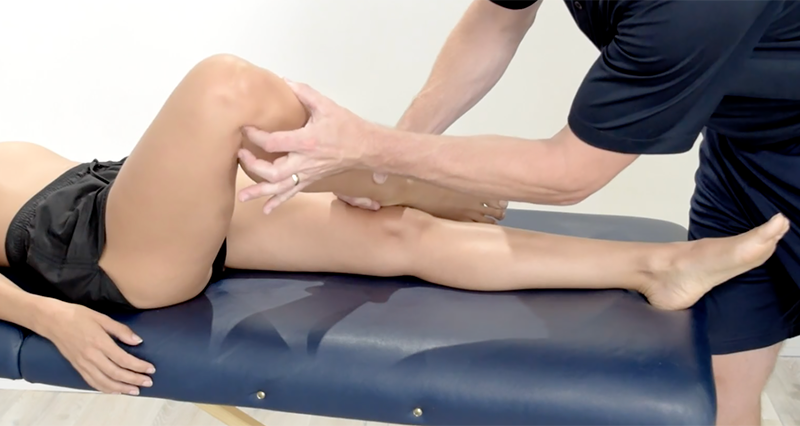What is Ober’s Test?
Ober’s test assess tightness or restriction of the iliotibial (IT) band and tensor fasciae latae (TFL) muscles. It is a common test for helping to diagnose iliotibial band syndrome (ITBS).
What is Iliotibial band syndrome?
Iliotibial band friction syndrome is the inflammation of the tensor fascia latae muscle’s long tendon as it rubs over the knee’s outer side. This band, a long fascia, connects the hip’s muscles to the shin bone and runs down the thigh’s outside.

How to perform Ober’s Test
Lie the patient on their side. Make sure the unaffected side is down with the side being tested on top. Stand behind the patient. Start by flexing the patient’s hip and knee to 90 degrees. Stabilise the patient’s pelvis with one hand to prevent rotation. Using the other hand, abduct the patient’s upper leg away from the body and extends it behind them. After fully extending the leg, slowly lower it toward the table or floor.

What is a positive Ober’s test?
If the patient’s upper leg remains abducted and does not drop towards the table or floor when lowered the test is positive. As a result, this suggests tightness or restriction of the IT band and Tensor fascia latae muscle. Conversely, if the patient’s upper leg drops towards the table or floor when lowered, it indicates normal flexibility of the IT band and TFL.
Ober’s test is used to assess iliotibial band syndrome (ITBS). If the Iliotibial band is tight then this causes friction as it rubs on the bone (femoral condyle). This eventually results in inflammation or degeneration of the tendon.
Tightness or restriction of the IT band and TFL contributes to biomechanical imbalances. Therefore, increasing stress on the knee and hip joints, leading to pain and dysfunction.
Positive findings on Ober’s test suggest the need for interventions aimed at addressing IT band tightness, such as stretching, soft tissue mobilization, and strengthening exercises targeting the hip abductors and external rotators.
Considerations
Perform carefully in order to avoid causing discomfort or exacerbating symptoms. It’s essential to interpret the results of Ober’s test in conjunction with other clinical findings and assessment tools to arrive at an accurate diagnosis and develop an appropriate treatment plan.
In summary, Ober’s test assesses IT band and TFL tightness, valuable in clinical settings. It proves particularly useful for patients experiencing hip, lateral thigh, or knee pain associated with ITBS or similar conditions.
